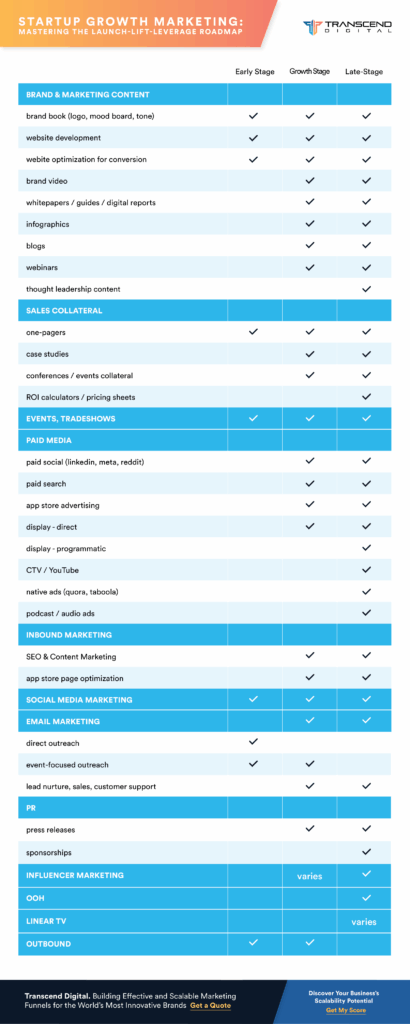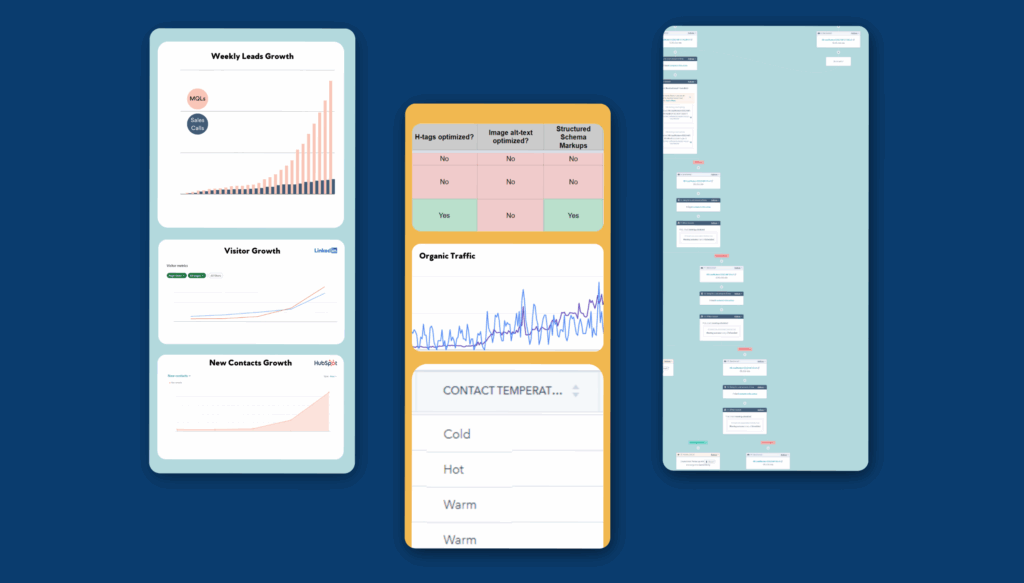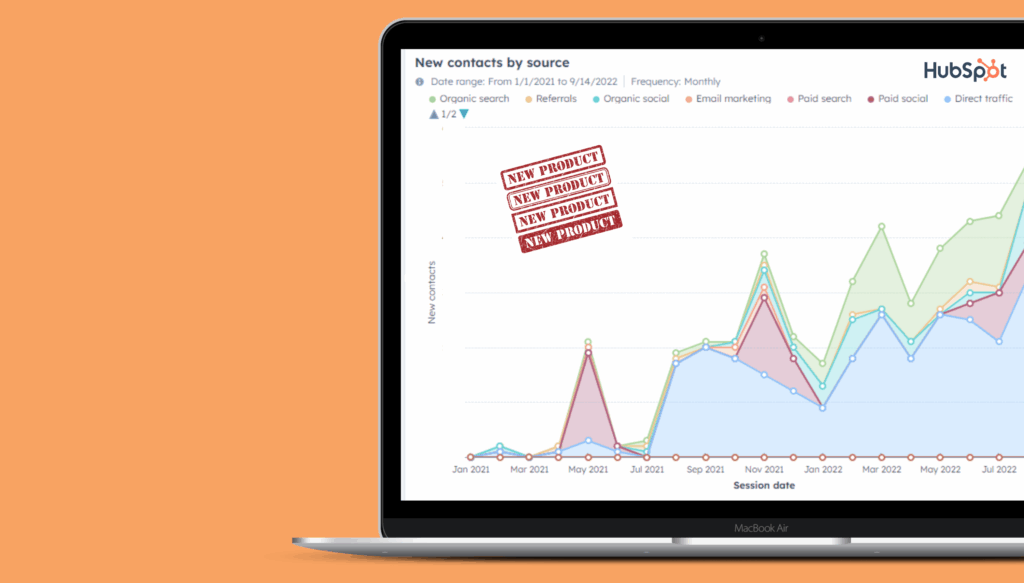- Different Stages of Company Growth – Different Marketing Budgets
- CAC-Based Marketing Budget Calculation
- Key Takeaway
- Go-to-Market Marketing Strategies
- Factors that Influence Your Marketing Strategy (and Marketing Budget)
- Calculating Marketing & Sales Expenses
- Marketing Team Expenses (Stuff Salaries + Professional Services Fees)
- Marketing & Sales Team Structure:
- Service Package:
- Marketing Campaign Costs
- Marketing Technology / Platform Expenses
- Conclusion
Have you ever started a new business venture and struggled with budgeting for marketing? It’s a common challenge for many entrepreneurs. Allocating too little money for marketing can lead to missed opportunities and slow growth while investing too much can hurt your profit margin and even jeopardize your business.
As a venture-backed startup founder, it’s crucial to understand the different stages of your company’s growth and how to adjust your marketing budget accordingly. In this article, we’ll explore the various stages of a startup’s growth and go-to-market marketing strategies to help you determine the appropriate marketing budget for your startup.
Different Stages of Company Growth – Different Marketing Budgets
When determining your startup’s marketing budget, the first thing to consider is your company’s current growth stage. Startups typically go through three main stages: early, growth, and maturity.
1. Early-Stage Startups (Pre-Series A)
Early-stage startups are in the initial stages of their business growth. They typically have a marketing budget of around 10% of planned annual revenue (10% of total budget or less) or roughly $5,000 to $10,000 monthly. At this stage, the primary focus is on achieving product-market fit and establishing a foothold in the market. A major challenge here is aligning engineering efforts with customer feedback, rapidly iterating on core features, and prioritizing what drives traction. Achieving this requires engineers who are fully focused—and that starts with having compensation incentives, especially equity, designed for maximum commitment.
Features of startups at this stage include the following:
- Self-funded and budget cautious: Early-stage startups are typically self-funded and operate with limited resources. As a result, they need to be careful with their spending and allocate resources wisely. It would help if you balanced investing in marketing and other business areas.
- Don’t need to invest in advertising: At this stage, your main focus is building the product and establishing a customer base. You don’t necessarily need to invest in advertising; you can use other tactics to attract customers. Word-of-mouth referrals, content marketing, and social media can build awareness and attract early adopters.
- Basic needs: As a startup CEO, your basic needs at this stage include creating a brand book, website, or landing page, and a one-pager. These are the minimum requirements for establishing a professional and credible brand presence.

2. Growth Startups (Series A, B)
The growth stage is exciting for startups as they have secured funding and are ready to scale their business. During this stage, marketing budgets increase significantly, with companies dedicating 25%-50% of their budget on marketing efforts. For SaaS businesses, marketing and sales expenses should be from 80% to 120% of annual revenue. So, what happens at this stage?
- The need to demonstrate growth and hit the milestones laid out to investors. The pressure to demonstrate sales growth and meet investor expectations is high during this stage, so startups need to have a solid lead generation and customer acquisition marketing plan in place.
- Brand building. There is no brand awareness at this stage, so as a startup founder, you need to build a brand, create demand, and build leads and sales pipelines.
- Require a significant portion of the budget to be allocated to advertising. At this stage, advertising is crucial to building brand awareness, generating leads, and driving conversions.
- Advanced needs: Your needs change drastically at this stage of startup growth. These include SEO and content marketing to improve your organic reach, sales collateral to support your sales team, webinars to educate your audience, email marketing to nurture leads, and paid media to drive traffic and leads.
3. Mature Startups / Late-stage Startups & Beyond (Series C,D+)
As your startup reaches the mature or late stage, its marketing budget allocation shifts toward a more established strategy. The marketing budget at this stage ranges from 10% to 25% of the total budget. Here is what to expect when you fall into this category:
- Expanding the product mix or entering new geographies: As your startup capitalizes on its stability and credibility, it will expand its offerings or enter new markets. You will require a certain level of investment to support these initiatives.
- Heavily performance-based marketing: Your startup is expected to deliver results and prove its profitability at this stage. Therefore, your marketing budget will be more heavily focused on performance-based initiatives.
- Still need ads to cement brand positioning: Even though your startup has reached a more mature stage, it needs to keep its brand positioning strong to maintain its status as a category leader. However, the percentage of the budget allocated to advertising may be lower than in the growth/series A stage.
- Marketing needs: To achieve your growth goals, you’ll need a comprehensive marketing strategy that includes a mix of paid media, content marketing, email marketing, sponsorships, and online video.

CAC-Based Marketing Budget Calculation
Your customer acquisition cost is the amount of money you need to spend to acquire a new customer. This includes the cost of marketing and sales efforts. You can calculate your CAC by dividing your total marketing and sales expenses by the number of new customers acquired. Understanding your CAC will help you determine how much you can afford to spend on marketing.
Key Takeaway
Determining your startup’s marketing budget requires thoroughly understanding your company’s growth stage and the specific goals you aim to achieve. As an early-stage startup, focusing on product-market fit and establishing a basic online presence is essential.
As your company grows, you’ll need to allocate more budget towards building brand awareness, creating demand, and generating leads and sales. And as a mature startup, you’ll need to focus on expanding your product mix while optimizing your paid media mix, content strategy, and other marketing initiatives.
In the first part of our guide, we highlighted a startup’s growth stages, individual budget requirements, and the go-to-market marketing strategies you should adopt for your startup. Now, let’s delve into the factors that impact your marketing strategy and the critical components of a marketing budget. Let’s get started!
Further Reading:
- How Most Startups Evaluate Marketing Agencies (and Why This Method is Flawed)
- SaaS Marketing Metrics Investors Want to See
- SaaS Go-To-Market Strategies: Tips and Examples for Success
Go-to-Market Marketing Strategies
First and foremost, your go-to-market strategy will determine your marketing budget. Here are four go-to-market marketing strategies to consider:
- Buy your way into the market to become a market leader: This strategy involves investing heavily in advertising, promotions, and sponsorships to establish your brand as a market leader. It requires a significant marketing budget and a clear understanding of your target audience. This strategy requires a significant upfront investment, but it can pay off in the long run by establishing the company as a market leader.
- Become a complementary player: This approach involves monitoring your competitors and adopting some of their successful marketing strategies. It can be a more cost-effective way to gain market share and establish yourself as a strong contender. This strategy requires a deep understanding of the market and the target audience (market leader’s strengths and weaknesses and how your products or services complement the market leader’s offerings).
- Create your own category: This strategy involves creating a new category that differentiates you from competitors. It requires a deep understanding of your audience and their unmet needs and a strong product that can deliver on them.
- Go niche with your product or distribution: This approach involves targeting a specific niche audience with a unique product or distribution strategy. It can be cost-effective to gain traction and build a loyal following.
- Be the first one to enter the market: Being the first mover can help a startup establish its brand and gain recognition in the market. The first mover can set the pricing for the new product or service, which can give it an advantage over competitors that enter later. This approach involves building brand recognition and customer loyalty. In this strategy one doesn’t need a big marketing budget in the short-term but requires marketing investment in the long-run when competitors are entering the space and / if the switching costs are low.

Factors that Influence Your Marketing Strategy (and Marketing Budget)
1. Sales Cycle
The length of your sales cycle can significantly impact your marketing budget. If your sales cycle is long, you may need to allocate more funds toward lead generation and nurturing to keep your prospects engaged and moving through the funnel. Conversely, if your sales cycle is short, you can focus more on driving conversions and repeat business.
2. Competitor Behavior
Your competitors’ actions can affect your marketing budget. For example, if a competitor launches a new product or service, you may need to increase your marketing efforts to stay top-of-mind and retain market share. Also, if your competitors invest heavily in advertising and other marketing tactics, you may need to allocate more funds to keep up.
3. Market Saturation and Market Size
The size of your target market and the level of competition within that market can impact your marketing budget. If you’re in a crowded market with a lot of saturation, you may need to allocate more funds to stand out. On the other hand, if you’re in a smaller market with less competition, you can give less towards marketing efforts.
4. Revenue Per Customer
The revenue you generate from each customer can also impact your marketing budget. If your revenue per customer is high, you can allocate more funds toward marketing efforts. Conversely, if your revenue per customer is low, you may need to be more cautious with your marketing spend.
5. Product/Service Price
The price of your product or service can also impact your marketing budget. If your product or service is high-priced, you may need to allocate more funds toward marketing efforts to reach your target audience. On the other hand, if your product or service is low-priced, you may be able to allocate less toward marketing efforts.
6. Entry Barriers
If significant entry barriers exist in your industry or market, you may need to allocate more funds toward marketing efforts to overcome those barriers and gain market share. For example, if your product requires a significant investment in infrastructure or resources, you may need to allocate more towards marketing to justify that investment to your target audience.
7. Switching Costs
If your product or service requires your customers to switch from an existing solution or provider, you may need to allocate more funds toward marketing efforts. Switcher costs can include the time and effort required to learn a new system and any costs associated with transitioning to a new provider.
8. Retention Rates
Your customer retention rates can also impact your marketing budget. If your retention rates are low, you may need to allocate more funds toward customer retention efforts. This can include tactics such as loyalty programs, customer service initiatives, and targeted email campaigns.
9. Customer Acquisition Cost (CAC)
Your customer acquisition cost (CAC) determines your marketing budget. CAC is the cost of acquiring a new customer and includes all marketing and sales expenses. If your CAC is high, you may need to allocate more funds toward marketing to reduce that cost and improve your return on investment (ROI).

Calculating Marketing & Sales Expenses
Determining your marketing budget requires a comprehensive understanding of your business, industry, and goals. By following these steps, you can allocate your resources effectively and make a significant impact with your marketing efforts.
Marketing Team Expenses (Stuff Salaries + Professional Services Fees)
When creating a marketing budget, it’s essential to consider your business’s scope of work and needs. This will help determine the optimal team size and structure. Here is what you should know:
1. In-House Model
The in-house model is a marketing team structure consisting of internal employees specializing in various marketing roles. This approach is ideal for startups in their late growth stage (Series C,D+), as they understand their product and brand.
Pros:
- You have access to subject matter experts in your industry who deeply understand your product, allowing them to create more effective marketing strategies.
Cons:
- Expensive
- The more complex your marketing strategy is, the more staff you need to hire, which adds costs.
Marketing & Sales Team Structure:
A good place to start would be hiring a VP of Marketing, VP of Business Development, Customer Service Rep, Sales Manager, Designer, Lead Generation Manager, Developer.

2. Full-Service Agency
A full-service marketing agency is an external agency that handles all aspects of a startup’s marketing. They provide a team of marketing experts to execute a startup’s marketing strategy. This model is best for startups at the aggressive growth stages (Series A, B).
Pros:
- Full-service agencies have a team of marketing experts who are experienced in their respective areas.
- Tried-and-true tactics allow them to identify and tailor successful tactics to a startup’s unique needs.
- Cost-effective
- They know what’s working today, leading to a reduced CAC.
Cons:
- There are many full-service agencies, so selecting the right one can take time and effort.
- The costs of choosing the wrong agency can be high.
Service Package:
Full-service agency growth package would include: Marketing Strategy, SEO, Content Marketing, Content Production (whitepapers / guides, reports, blogs, one-pagers, etc.), Email Marketing, Paid Media, Creative & Copy, Landing Page Development and Social Media Management.
3. Blended Model
The blended model is a hybrid of the in-house and full-service agency models. It involves combining in-house marketing team members and outsourced agency support. This model is best for startups in rapid growth and late stages of growth (Series A, B, C, D+).
Pros:
- You get the benefits of both worlds – you have the strategic direction and control of an in-house team and the specialized skills and resources of an agency.
- This model is viable across all stages of growth: early-stage, growth and late-stage.
Cons:
- Depending on your marketing strategy and your sector, you may still need to invest in fully staffing your in-house marketing team.

Marketing Campaign Costs
Paid media costs or advertising costs are a significant component of a startup’s marketing budget. These costs can vary depending on the marketing channels used, the target audience, and the specific campaign’s goals.
Paid media can include various forms of advertising, such as display ads, social media ads, search engine marketing, and native ads. The cost of these ads can vary depending on the platform used, the type of ad, and the target audience. The more targeted the audience, the more expensive the ads can be.
The duration of the campaign, the ad frequency, and the ad format can also impact the cost of paid media. A longer campaign with more frequent ads can cost more than a shorter, less frequent campaign. Video ads or interactive ads can also cost more than simple display ads.
Marketing Technology / Platform Expenses
In addition to paid media costs, software and platform fees are another component of a startup’s marketing budget. These fees can include costs associated with content management systems (CMS), social media management tools, marketing automation software (e.g., HubSpot, Marketo), customer relationship management systems (e.g., Salesforce, HubSpot), email marketing platforms (e.g., Mailchimp, HubSpot), webinar software and other marketing-related tools. These tools often require engineering support. If you’re looking to hire the right talent, Lodely talks about how software engineers look for roles with these type of marketing integration challenges.
Conclusion
Determining your startup’s marketing budget requires thoroughly understanding your company’s growth stage and the specific goals you aim to achieve. As an early-stage startup, focusing on product-market fit and establishing a basic online presence is essential.
As your company grows, you’ll need to allocate more budget towards building brand awareness, creating demand, and generating leads and sales. And as a mature startup, you’ll need to focus on expanding your product mix while optimizing your paid media mix, content strategy, and other marketing initiatives.
Creating a marketing budget can be daunting, but it is crucial for the success of any business. It is essential to consider all the components of an effective marketing strategy, including team size and structure, advertising costs, platform fees, and more.
Whether you choose an in-house model, a full-service agency, or a blended model, it is essential to make a strategic decision based on your business’s needs, goals, and budget. Contact us today to learn more about our growth marketing solutions for startups, discuss pricing and learn how we can help you determine the marketing budget for your startup.



